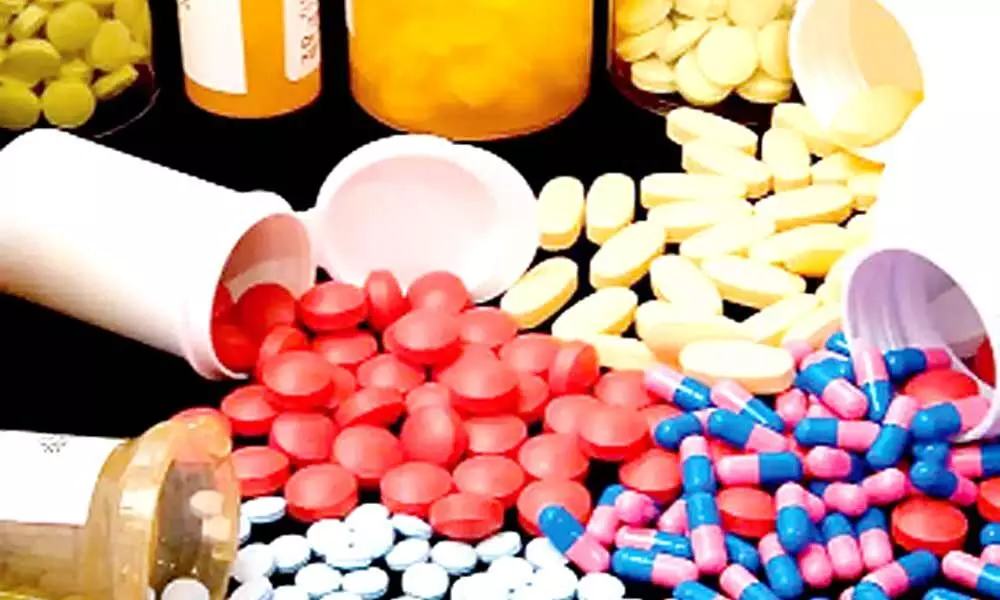How Barcoding could help prevent fake drugs
Health Ministry has decided to introduce a trace and track mechanism for most popular brands available in the Indian market to ensure the quality, safety and efficacy of medicines
image for illustrative purpose

According to the ministry's proposal, the manufacturers of medicines should print a 14-digit number on the labels of the top-300 pharmaceutical brands identified by it on the basis of moving annual total data obtained from AIOCD AWACS, along with a mobile number of the manufacturer. Since the numbers would be unique to each strip and bottle sold in the market, a consumer could easily check authenticity of drugs by sending a message to the given number and get details of the manufacturer, batch number, expiry data, etc
The supply of spurious and substandard medicines in the pharmaceutical market has been a major issue the country has been facing for a long time. Though the Indian government has periodically been taking several measures to contain, if not completely eradicate, this menace, it seems to have failed in its attempts as there are reports of spurious and substandard medicines making its entry in the pharmaceutical supply chain in the country.
To cleanse the Augean stables, the Union Health Ministry is now gearing up to introduce a unique Quick Response (QR) code for all medicines sold in the domestic market. The QR code will help track and trace medicines during the entire supply chain and ensure its authenticity. To start with, the ministry will introduce this barcode or QR code on the top 300 brands of medicines available in the Indian market to help track and trace these brands.
The Health Ministry is concerned over the surge in spurious or fake medicines in the country as it is not only a potential threat to the lives of its citizens but also will dent its image as being one of the largest suppliers of drugs and pharmaceuticals in the world.
According to the ministry's proposal, the manufacturers of medicines should print a 14-digit number on the labels of the top 300 pharmaceutical brands identified by it on the basis of moving annual total data obtained from AIOCD AWACS, along with a mobile number of the manufacturer. Since the numbers would be unique to each strip and bottle sold in the market, a consumer could easily check authenticity of drugs by sending a message to the given number and get details of the manufacturer, batch number, expiry data, etc.
It is a fact that there has been a rise in the number of drug samples declared spurious or adulterated over the last some years. A total of 74,586 drug samples were tested in 2015-16. Of them, 3703 drug samples were declared not-of-standard quality (NSQ) which is 4.96 per cent of the total drug samples while 234 drug samples were declared spurious or adulterated which is 0.31 per cent of the total drug samples. In 2016-17 about 76,721 drug samples were tested. Of them, 2780 drug samples (3.6 per cent) were declared NSQ and 123 drug samples (10.16 per cent) were declared spurious or adulterated. Same is the case in 2017-18 also as around 82,599 drug samples were tested. Of them, 2783 drug samples (3.36 per cent) were declared NSQ while 236 drug samples (10.28) were declared spurious or adulterated. In 2018-19 over 76,101 drug samples were tested. Of them, 2549 drug samples (3.35 per cent) were declared NSQ while 205 drug samples (0.27 per cent) were found spurious or adulterated. The story is not much different in the subsequent years also.
The seriousness of the issue can be gauged from the fact that the Department related Parliamentary Standing Committee on Union Commerce Ministry, expressing its concern on the rising incidences of spurious and adulterated drugs in the country, had also recommended to the government to roll out a track and trace mechanism at the earliest for the detection of authenticity and genuineness of medicines and medical devices from manufacturers to end users in supply chain.
In fact, a proposal to implement some kind of barcoding mechanism for the pharmaceutical industry has been in consideration for quite some time and has been deliberated by senior officials of Union Health Ministry, Department of Pharmaceuticals (DoP), Union Commerce Ministry, Niti Aayog and Prime Minister's Office (PMO). After series of deliberations, the Health Ministry has decided to introduce a trace and track mechanism for most popular or top 300 pharmaceutical brands available in the Indian market to ensure the quality, safety and efficacy of medicines.
(The author is freelance journalist with varied experience in different fields)

